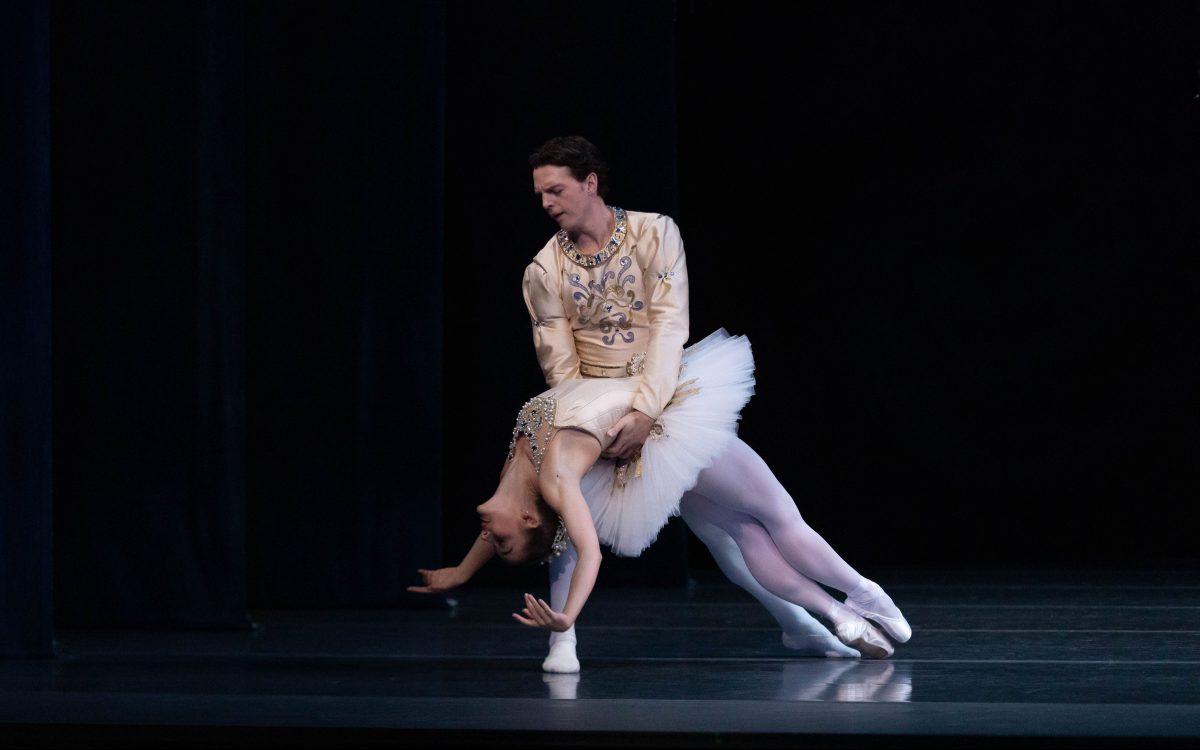In this 70th anniversary year of The Australian Ballet, Artistic Director, David Hallberg, has commissioned George Balanchine’s famed first full-length ballet, Jewels, which is also one of the renowned modern choreographer’s most popular works. It is a ballet, as Hallberg announces in his audience address, without a story, just a theme.
It was ‘masterfully choreographed’ by Balanchine, as Hallberg says, revealing the authority the choreographer holds in the ballet realm and the regard for his prowess. The man behind the choreography, however, has more recently been subject to criticism, following the release of memoirs by dancers under his tutelage in the 1960s, which recount his misogynistic behaviour in the studio.
Balanchine once famously said, ‘The ballet is a purely female thing; it is a woman, a garden of beautiful flowers, and man is the gardener.’ Jewels may then be an interesting choice for performance right now – with its theme of pretty, ornamental objects – as we hear increasing calls for ballet to be more inclusive and less entrenched in traditional gender roles. Something about this billing choice feels a bit reductionist, in spite of the beauty and glamour of the choreography and mise en scène.
To move on to the performance – the set by Peter Harvey, costume design by Barbara Karinska and lighting design by Ronald Bates (reproduced by Perry Silvey) ensure that the dancers are ready to dazzle. The curtains rise to the Emeralds variation. Sparkling green chandeliers hang from the stage as the female corps de ballet, wearing deep green velvet encrusted with jewels, spin across the stage, the jewels clinking as they go. The movements are ornate and lustrous, with skilful balances and elegant arm movements.
When this reviewer attended there were a few wobbly moments, highlighting perhaps first night nerves combined with the complexity of Balanchine’s turning balances. But this is technically pleasing choreography with pomp and circumstance, accentuated by the French horns of Gabriel Fauré’s score.
Despite the abundance of prettiness, I found myself craving some of the passion and longing elsewhere in The Australian Ballet dancers’ repertoire, such as the recently performed contemporary pieces for Identity. Balanchine’s choreography sometimes feels a little like period drama, very pretty but a little aromantic because of the notable gender roles in the pas de deux. This is very much “traditional ballet” in spirit, with a flashy modern façade. The dancers, however, make the choreography their own and are energised by its showiness. Their formation is immaculate.
Balanchine was a lover of lines and especially diagonals, accentuated by tilts of the head and upper torso (épaulement). These diagonal formations, performed in perfect symmetry by the corps, imitate the sharp facets of jewels. The charming butterfly-like hands of the Emeralds is another signature movement in the Balanchine style and the dancers spin and bourrée across the stage with perfect grace.
Imogen Chapman and Maxim Zenin showed off with spring-like jumps and petit allegro in a prancy pas de deux to finish this shimmering first act, the audience audibly buzzing with delight.
The second act welcomes Rubies to the stage, the glowing embers of the red stones emanating from the hanging set. This section is danced with much sassiness, as the female corps thrust their hips forward, making exaggerated diagonals with their legs. The footwork is incredibly fast and precise, perfected by the sparkiness of Isobelle Dashwood, a statuesque and powerful soloist.
The score is Igor Stravinsky’s Capriccio for Piano and Orchestra, with solo pianist Duncan Salton on the jazz piano. Dashwood’s allegro was pacy and temperamental, featuring angular arms and standing splits. The flexed ‘talk to the hand’ gestures and duck feet were idiosyncratic and entertaining. This is Balanchine’s choreography at its most playful, and you can sense the fun in performing it.
Read: Theatre review: Is God Is, Melbourne Theatre Company
Diamonds is the final act and the most elegant and classical part of the production, featuring slow twirls in white sparkling tutus. This variation is reminiscent of Tchaikovsky’s Dance of the Snowflakes, suitable for a score created by the imperial Russian composer. With her energetic charisma, Benedicte Bemet enlivened this waltzy final act with beautiful grand jétés and fast fouettés.
The ballet ends with a drumroll crescendo and triumphant adage from the corps, polishing off a gem of a ballet, leaving charming, but not profound impressions.
Jewels, Arts Centre Melbourne
The Australian Ballet
Choreography: George Balanchine © The George Balanchine Trust
Music: Gabriel Fauré, Igor Stravinsky, Piotr Ilyich Tchaikovsky
Costume design: Barbara Karinska
Set design: Peter Harvey
Staging: Sandra Jennings
Original lighting design: Ronald Bates, reproduced in 2023 by Perry Silvey
The dancers alternate depending on the performance, check the website for further details.
Jewels by The Australian Ballet is being performed at Arts Centre Melbourne from 29 June to 8 July.
This article is published under the Amplify Collective, an initiative supported by The Walkley Foundation and made possible through funding from the Meta Australian News Fund.





